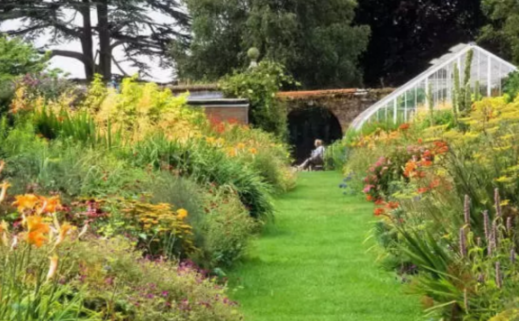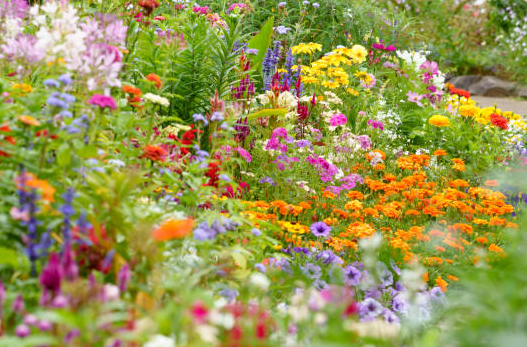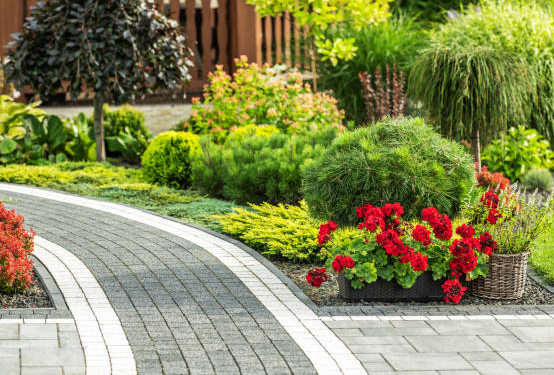Some say that flower borders are the epitome of garden art.
If you’re lucky enough to have your own garden, why not try creating a flower border?
Even if you don’t reach the level of a master gardener, the joy of experimenting and creating is one of the greatest pleasures of gardening!
A flower border (also called a flower bed or mixed border) is a landscaping technique inspired by the natural growth patterns of wildflowers. It uses artistic principles to create scenery by combining primarily perennial flowers (including herbaceous perennials, bulbs, and evergreen species) and shrubs. These are arranged in a naturalistic style along woodland edges, lawns, lakesides, or streams to achieve a balanced, harmonious, and aesthetically pleasing landscape—both in layout and seasonal change—while also following ecological principles.

The goal is to create a scene that feels “crafted by human hands, yet as natural as if born from nature.” It highlights both the individual beauty of plants and the collective beauty of plant communities, full of natural charm, striving for a form and essence that is inspired by, expresses, and returns to nature.
Types of Flower Borders
By setting:
-
Woodland-edge borders
-
Roadside borders
-
Wall-base borders
-
Waterside borders
-
Courtyard borders
By viewing style:
-
One-sided viewing borders
-
Double-sided viewing borders
-
Symmetrical borders
In general, all types feature plant diversity, rich vertical layering, and pronounced seasonal changes. Here are a few key skills to get you started:
— Time Planning —
A flower border is a relatively stable planting format and typically only needs adjustment every 3 to 5 years. So when choosing plants, consider their seasonal traits and long-term compatibility.
Each border includes:
-
Focal plants (main feature)
-
Companion plants (supporting role)
-
Background plants (create depth)

Focal plants should be hardy perennials and shrubs that can overwinter outdoors. Choose easy-to-grow varieties that don’t require special care. When planting, give each plant enough space to mature and take their growth rates into account. Neighboring plants should have similar vigor and spread rates to ensure the design stays balanced over time. In the first year, your border might look underwhelming—but it will only get better with time.
Plan for continuous bloom from spring to autumn by combining plants with staggered flowering periods. Choose varieties with long bloom times and high ornamental value.
Also, leave a small area for annuals and bulbs, which add vibrant colors and give you the freedom to experiment with new looks each year.
— Spatial Layering —
Plants in a flower border are typically grouped in clusters of 3–5 of the same species, and these irregular clusters are then combined to mimic the natural growth of wild plants.
The border has three layers:
-
Foreground
-
Midground (ideal for focal plants, often repeated for cohesion)
-
Background
As a general rule, plant the tallest species in the back and the shortest in the front or around the edges. However, strictly following this can make the layout too predictable and boring.
Occasionally placing tall-stemmed plants near the front can break the monotony and create a more dynamic and layered look.

— Color Coordination —
Ideally, a flower border should offer a colorful and beautiful view all year round—but realistically, that’s hard to achieve. A more practical approach is to create a series of color peaks throughout the growing season. When colors become sparse, use annuals or tender perennials to add a burst of vibrancy.
Three common color schemes:
-
Monochromatic – Emphasizes a single color tone; used sparingly or for special themes.
For instance, in a white-themed garden, you can play with shades like cream white, blush white, or cool white. Leaf color also plays a key role—use contrasting shapes, textures, and tones like light green, deep green, silver, or gray-green to create visual interest. -
Analogous colors – Great for expressing seasonal moods.
Examples: light yellow in early spring, golden tones in autumn. Harmonize with the surroundings. Warm tones (yellow, red, orange) feel cozy; cool tones (pink, blue, purple, lavender) create a calm, serene vibe. -
Complementary colors – High contrast, bold and eye-catching.
Use in small areas to add excitement. Examples: orange + blue, yellow + purple—striking and vibrant combinations.
What about your garden?
Time to start experimenting and bring it to life!

